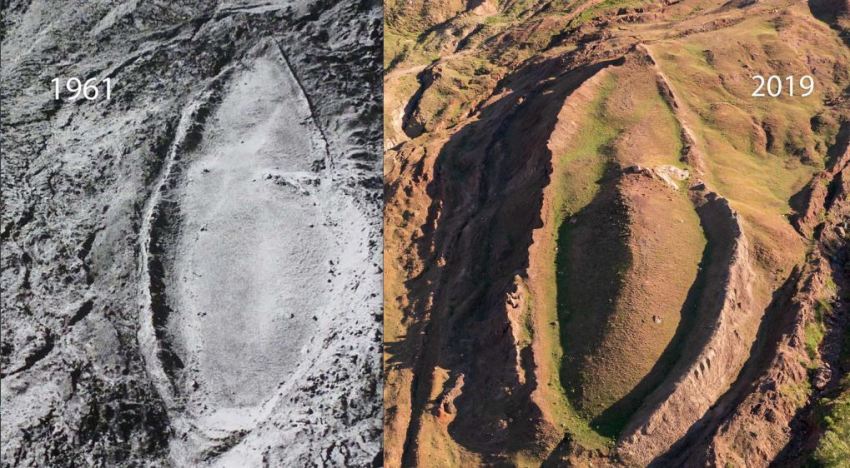Scientists: Evidence of pottery, ancient human activity found at potential site of Noah's Ark
Rock, soil sample testing spur calls for continued research in eastern Turkey

Researchers say while it’s not quite definitive proof just yet, they can confirm the existence of ancient human activity and pottery at a remote site in eastern Turkey, which some believe could be the landing site of Noah’s Ark.
The project at what’s known as the Durupinar formation, a unique “boat-shaped” geological formation that has drawn interest since its discovery on Sept. 11, 1959, has unearthed new findings which, while still being analyzed, could trace back to what researchers believe was the dawn of the clay firing process used to make pottery.
At a symposium in October at Istanbul Technical University, researchers from Istanbul Technical University, Agri Ibrahim Cecen University (AICU) and Andrew University, a private Seventh-day Adventist university in Michigan, announced the results of recent studies at Durupinar formation.
Using ground-penetrating radar, the team ventured to the site in December 2022 and found subterranean layers and “intriguing angular structures,” which, according to researchers at Noah’s Ark Discovered Project, are “characteristics not typically associated with natural geological formations.”
In presenting the findings, AICU Vice Rector, professor Faruk Kaky, said initial testing of more than two dozen rock and soil samples could point to evidence for human activity at the site roughly 5,000 years ago.
Kaky said the archaeological artifacts show an advanced knowledge of the clay-making process.
When we looked at the structure of these pottery pieces, we saw that they weren’t made solely out of clay,” he said in his presentation. “They were polygenic, i.e., composed of … small and large fine clay grains, sand, silt and grains almost the size of gravel, and rocks of different origin.
"This shows that the artifacts date back 5,000 years. This means that the works at this site go way back. People made them by firing clay right here.”
While efforts have largely involved only an initial archaeological surface survey, which consists of the team walking around the area looking for pottery and taking soil and rock samples, the next phase is expected to be geophysical surveys, core drilling and potentially a “limited form of excavations.”
In addition to the formation’s “boat shape,” supporters of the ark theory point to the dimensions of the ark provided in the book of Genesis — 300 cubits by 50 cubits by 30 cubits, or 164 yards by 27 yards by 16 yards (150 meters by 25 meters by 15 meters), closely lining up with the size of the Durupinar formation.
In an Oct. 26 statement, Kaky said, “With the dating, it is not possible to say that the ship is here. We need to work for a long time to reveal this.”
While Genesis 8:4 only says the ark “came to rest on the mountains of Ararat,” the final resting place of the ark or traces of its contents have never been identified.
Despite the potential discovery, both Christian and secular scientists have thrown cold water on the finding.
In an October 2021 post, Answers in Genesis President Ken Ham noted that the Durupinar formation site had been speculated to be the site of Noah's Ark as far back as 1959.
In his post, Ham included statements by geologist Andrew Snelling, director of Answers in Genesis' research department. Snelling does not expect the ark to have survived intact to this day.
"With no mature trees available for Noah and his family to build shelters after they got off the Ark, there is every reason to expect they dismantled the Ark (which they didn't need anymore) to salvage timber from it," stated Snelling.
Live Science, which suggested the biblical flood account is “an instructive myth or parable about God’s punishment for man’s wickedness,” said there is no consensus among archaeologists about whether any physical evidence for the ark has been discovered.
A California State University geologist, meanwhile, released a paper calling the biblical link “bogus,” asserting the area was merely a rock formation and not an ancient boat.
Researchers first announced their initial interest in the Durupinar formation in 2021, but the site itself was discovered in 1959 by a Turkish army captain. The research interest in the site began in the 1970s through the mid-1990s due to the work of American explorer Ron Wyatt and others.
According to the project's website, independent private geophysical surveys were conducted in 2014 and 2019, "showing layers and interesting angular structures below the ground."



























